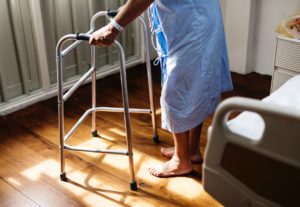 Bedridden patients and those confined to wheelchairs are at a high risk of developing pressure ulcers. Also known as “bedsores,” these skin lesions can progress quickly and, if left untreated, can lead to infections, cancer, and other serious complications.
Bedridden patients and those confined to wheelchairs are at a high risk of developing pressure ulcers. Also known as “bedsores,” these skin lesions can progress quickly and, if left untreated, can lead to infections, cancer, and other serious complications.
Family members and loved ones who want to be on the lookout for may wonder what is a beginning sign of pressure sores? In this article, we’ll answer this question and explain how often patients should be repositioned to prevent pressure ulcers.
If you’re a medical malpractice attorney and representing a client who suffered bedsores, you will likely need the testimony of a medical expert to prove liability and the severity of your client’s damages. You may also need a nursing care plan to outline the types of treatment your client will need to achieve maximum medical improvement.
At Cardinal LifeCare Consulting, we can help with both. Call 724-487-0519 to schedule a consultation.
Early Symptoms of Pressure Ulcers
Pressure ulcers are skin lesions resulting from friction or prolonged pressure. Patients confined to wheelchairs or hospital beds are at a particularly high risk of developing bedsores due to their impaired mobility. If pressure ulcers aren’t spotted during the early stages (Stage I), they can progress and break through the fatty tissue underneath and expose the bone (Stage IV).
Pressure ulcers tend to develop along the bony parts of the body where the skin makes contact with the bed or wheelchair. Healthcare providers should regularly check at-risk patients around the heels, scalp, hip bone, buttocks, and tailbone for early signs of bedsores. Symptoms include skin discoloration, swelling, tenderness, and pus.
Preventative Care
The only way to prevent bedsores is to ensure patients are repositioned at regular intervals to relieve stress on the skin. But how often should residents in wheelchairs be repositioned?
Healthcare providers should ensure that at-risk patients are repositioned once every few hours. Pillows can also be used to prevent parts of the body, such as the legs, from pressing against each other. Also, steps should be taken to ensure the patient’s skin is kept clean and dry at all times as moisture can accelerate skin degradation and exacerbate existing ulcers.
Treatment
If left untreated, pressure ulcers can lead to serious complications such as cancer, bone and joint infections, cellulitis, and sepsis. Patients suffering from Stage III or Stage IV pressure ulcers may require complicated surgeries, medication, and rehabilitation.
Life Care Planning & Expert Witness Services for Attorneys
At Cardinal LifeCare Consulting, we specialize in creating evidence-based and objective life care plans and nursing care plans that serve as valuable evidence during settlement negotiations and litigation of medical malpractice cases. We also work with a network of well-credentialed healthcare professionals who are experienced in providing testimony in personal injury and wrongful death cases. Call 724-487-0519 to schedule a consultation.




